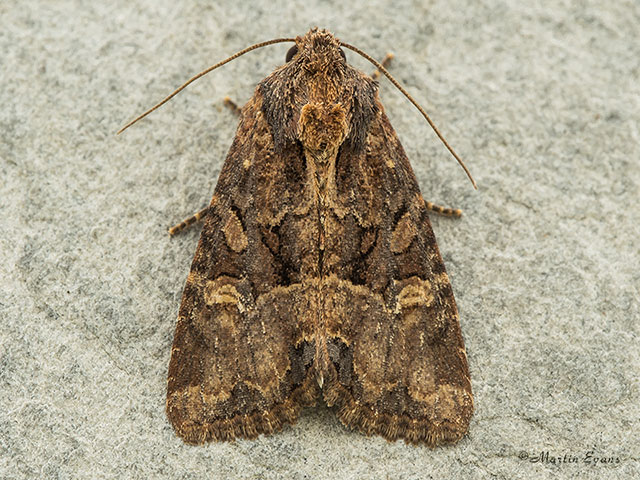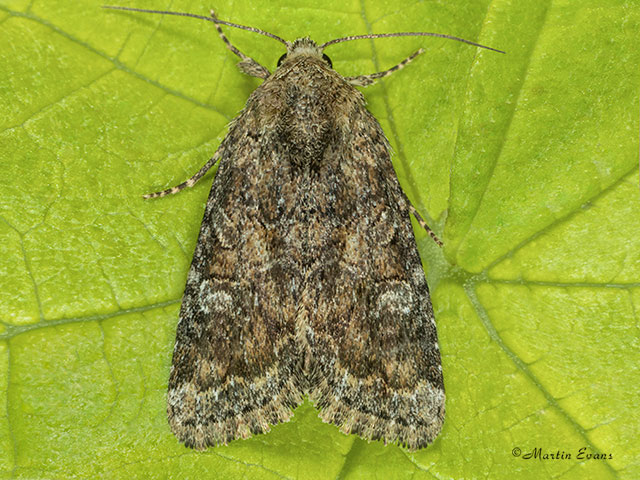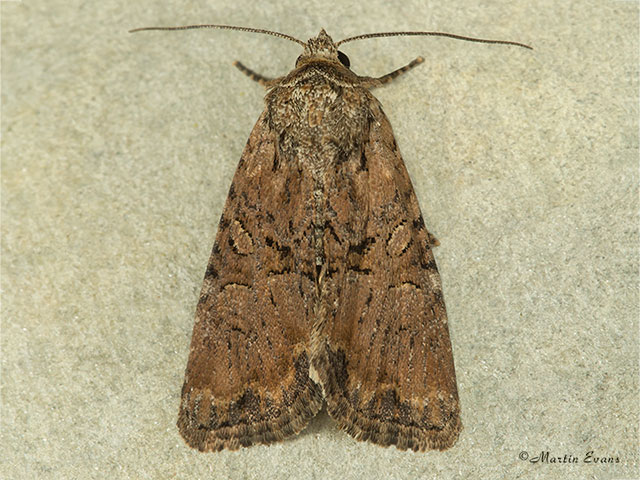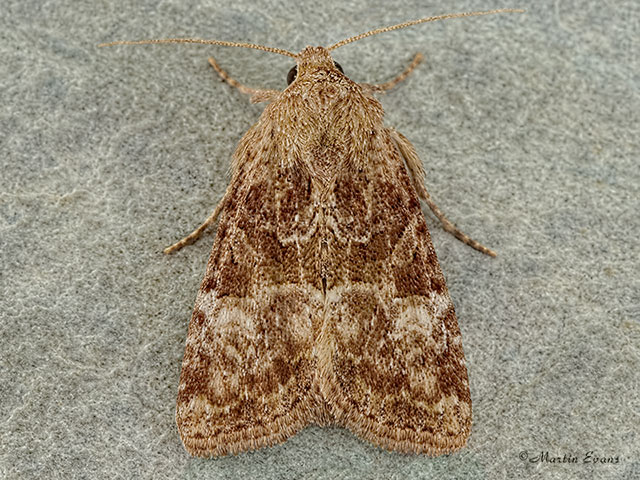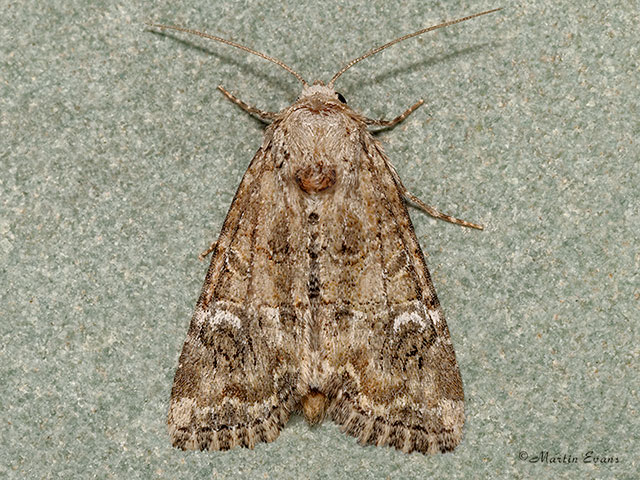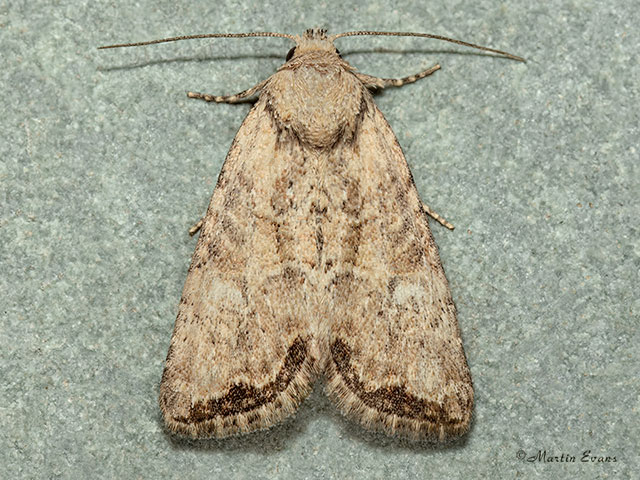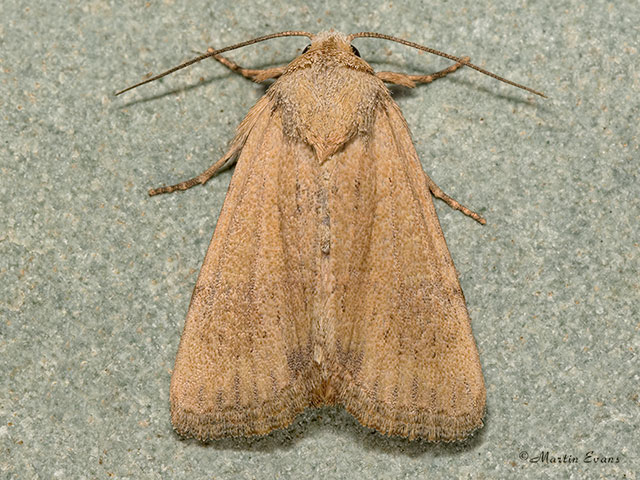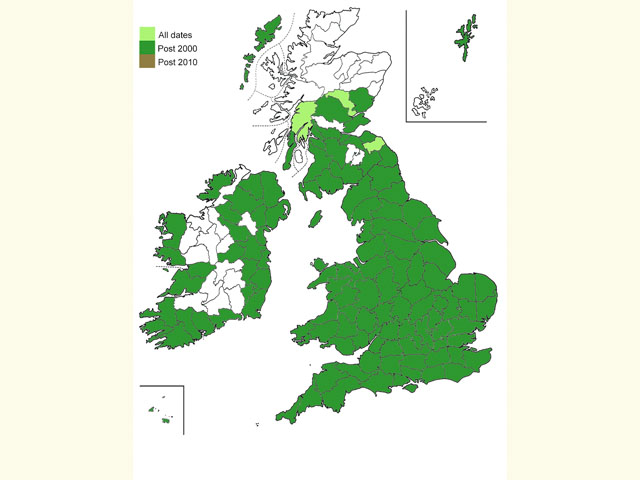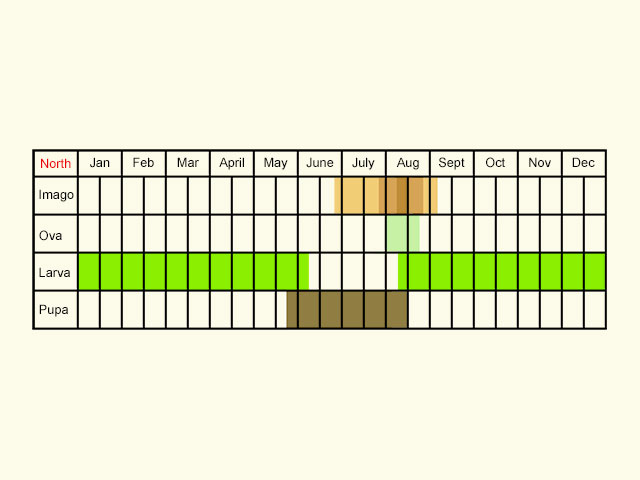Noctuidae
73.172 Cloaked Minor Mesoligia furuncula ([Denis & Schiffermüller], 1775)
Common
Similar species: An extremely variable moth that can usually be identified by the sharp division of dark pattern at the base of the wing and the pale outer area giving it the effect of a "cloak". Pale forms are more difficult although the division is usually faintly indicated. The plain buff forms are superficially similar to the plain forms of the larger (11 to 14mm) Small Dotted Buff Photedes minima until they are seen along side each other.
Forewing: 10 to 12mm
Habitats: Coastal downland, sea-cliffs, sand-dunes, dry calcareous grassland, other short-turfed grassland and gardens.
Habits: The male sometimes flies in sunshine, in the late afternoon and before dusk. The moth visits Common Ragwort, Marram and other flowers and comes to sugar and light.
Foodplant: The larva feeds inside the stems of Tufted Hair-grass, Sheep's-fescue, Tall Fescue, False Oat-grass and other grasses, changing stems as it grows. It pupates in a chamber it has made at the base of the plant.
On the European mainland it has also been recorded feeding on Lyme-grass and reed-grasses.


